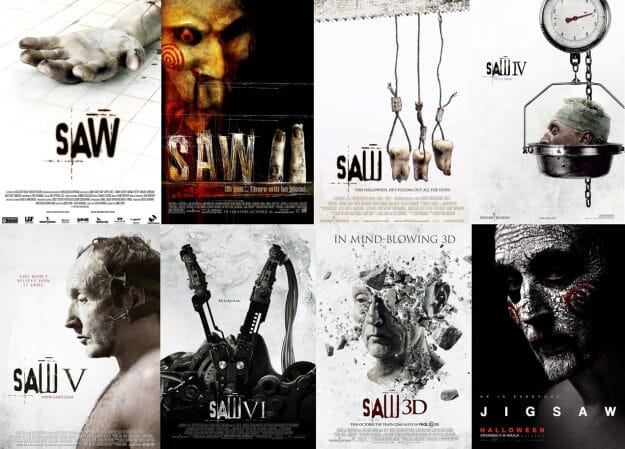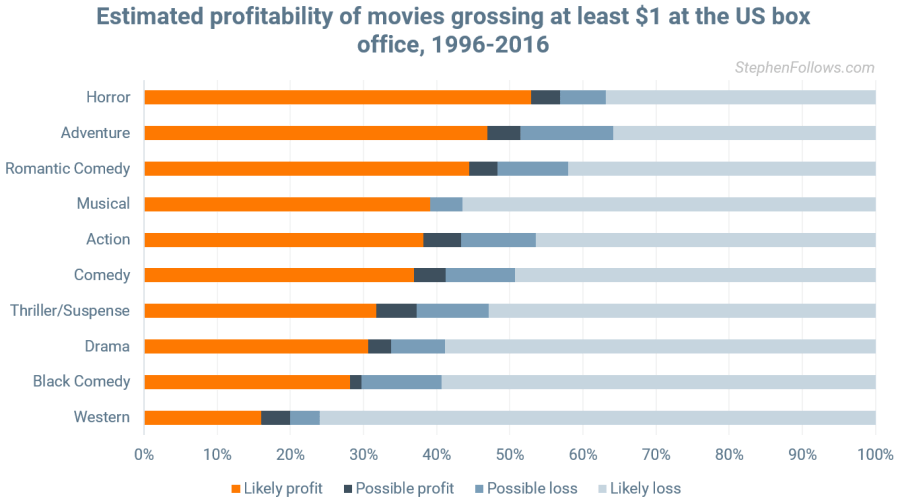
Halloween culture in America is about everything spooky. While some people pick out costumes and candy, studios are waiting to release the next best horror film. So it’s no surprise that the holiday has turned into a money-making marathon of horror movies. So how has Hollywood been able to keep it up? There’s no real answer as to why we enjoy terrifying ourselves, but the data has shown that scary movies do well, really well. In the past 10 years, horror related media has pretty much doubled in popularity. More people are consuming books, dramas, and even tweets that evoke fear, and horror movies are at the height of their profitability. It’s safe to assume the movie-making big wigs best understand performance data in a visualization (with good reason). From heart rate to profits, horror movie data carries crucial insights.
Insights can be anywhere
With horror, data can come from anywhere. Folklore, history, the future, and anything else where fears can be exploited. You can focus on the science of horror to write a truly bone-chilling script or make a spine-tingling soundtrack. What makes the hair on your neck stand up? Does a dark color palette, shrill music, and ghostly images increase our heart rate? It sounds a bit too scientific, but the data proves how strong our physical reactions can be to horror. Feel chilly all of a sudden? It’s probably because of the sweat, not a ghost. Why do we even watch them when all they do is scare us? It probably has to do with our addiction pathways and the adrenaline rush we get from fear. That wave of fear is a feeling that many viewers actually enjoy.
So studios are willing to produce scripts that evoke strong fear reactions, which is how we ended up with so many Saw sequels and prequels.
Follow the data and the money
For the studios and investors that just want to see ROI, ticket sales are data treasure. In 2017, the American box office saw fall horror movies reach $1 billion in sales for the first time ever. Jordan Peele’s Get Out took horror in a new direction, racism. Not only the relatively modest budget make $30 million its first weekend, it disproved Hollywood’s belief that black leads aren’t profitable. Not only did Get Out break the norm of typical horror subjects, it became part of a cultural shift. People are responding to more intellectual and socially conscious narratives that disturb us in different ways.
We might not have predicted such a change, but the genre remains popular. If you remember the 90’s, you’ll remember The Blair Witch Project. It was a cultural explosion for found footage film and high profits on low budget horror or in other words, an investor’s dream movie. Data shows despite the high risk of flopping, horror moves also have the best return on investment, since horror movies typically have smaller budgets than the competition. Other blockbusters can make $1 billion in sales and 500+% ROI, while lower budgeted horror movies make less in sales but 2000+% ROI. For the rest of us, this data means we get high quality horror every year.
Happy Halloween
Now, franchised horror films are the most profitable they’ve ever been, even breaking records along the way. The way we wait for the best horror blockbusters on Halloween is ritualistic. The data proves we want these movies and the ticket power is incredible. This October is already doing well with a few horror movies breaking the box office, so enjoy yourself with a good horror film this Halloween and think about the data that helped create it. If you’re up to the challenge, check out any of the movies that are so scary Netflix data says most people were unable to finish.


